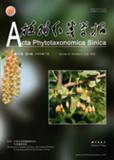WEI Fa-Nan, TANG Sai-Chun
The circumscription of Machilus Nees and of Persea Mill. (Lauraceae) has long been in dispute. In this paper, the generic boundary between Machilus and Persea is discussed. Machilus and Persea are two distinct genera different in some important characters. The perianth-segments in the genus Machilus are equal or subequal, rarely with the outer whorl conspicuously shorter than the inner whorl, and the segments at fruiting stage become chartaceous, rarely thinly coriaceous, elongated, strongly reflexed, rarely patent and not reflexed, almost persistent, rarely deciduous, and if deciduous, the perianth-segments of both outer and inner whorls fall from the base; the style is deciduous early. The species in this genus are distributed in tropical and subtropical Asia. On the contrary, the perianth-segments in the genus Persea are very unequal, with the outer whorl conspicuously shorter than the inner whorl, rarely subequal, and the segments at fruiting stage become coriaceous to lignescent, rarely thinly coriaceous, patent or erect, almost not reflexed, mostly persistent or falling 1/3 to 1/2 the distance from the base of the inner whorl perianth-segments, rarely wholly falling from the base; the style is sometimes persistent. The species in this genus are native to America. Two new combinations, Machilus balansae (Airy Shaw) F. N. Wei & S. C. Tang and M. sumatrana (Kosterm.) F. N. Wei & S. C. Tang, are proposed.

